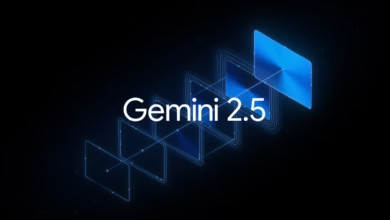Claude Opus 4 Breaks Records: Outperforms OpenAI in AI Coding Marathon

▼ Summary
– Anthropic released Claude Opus 4 and Claude Sonnet 4, showcasing AI’s ability to handle complex, day-long projects without human intervention, such as a seven-hour coding task.
– Claude Opus 4 outperformed OpenAI’s GPT-4.1 with a 72.5% score on SWE-bench, establishing Anthropic as a strong competitor in the AI market.
– The AI industry is shifting toward reasoning models that simulate human-like problem-solving, with usage growing fivefold in early 2025.
– Claude 4 models feature dual-mode architecture, balancing quick responses for simple queries and extended reasoning for complex tasks, while also solving the “amnesia problem” with persistent memory.
– Despite advancements, transparency remains a challenge as AI models grow more sophisticated, with Anthropic’s research showing models often omit key reasoning steps.
Anthropic’s latest AI models are redefining what artificial intelligence can achieve in professional environments, particularly in software development and complex problem-solving. The newly launched Claude Opus 4 and Claude Sonnet 4 demonstrate unprecedented capabilities, with the flagship Opus model maintaining focus on intricate coding tasks for nearly seven continuous hours during real-world testing at Rakuten. This endurance represents a monumental shift from previous AI systems that typically operated in short bursts.
What sets Claude Opus 4 apart is its remarkable 72.5% score on the rigorous SWE-bench software engineering evaluation, significantly outperforming OpenAI’s GPT-4.1 which scored 54.6% at launch. These results position Anthropic as a serious contender in the competitive AI landscape, challenging established players with specialized capabilities for technical workflows.
The AI industry has witnessed a dramatic shift toward reasoning-based models in recent months. Unlike traditional systems that provide rapid responses through pattern recognition, these advanced models simulate human-like problem-solving approaches. They methodically analyze challenges before responding, creating more reliable and nuanced solutions. Usage statistics reveal this trend clearly – reasoning model interactions have increased fivefold in just four months according to recent industry reports.
Claude’s newest iterations introduce groundbreaking features that mirror human cognitive processes more closely than ever before. The models integrate real-time information gathering directly into their reasoning workflow, allowing them to pause, research, and incorporate new data mid-analysis. This creates a more natural problem-solving dynamic that adapts to complex scenarios as human experts would.
Anthropic has cleverly addressed a common user frustration with its dual-mode architecture. The system intelligently toggles between near-instant responses for simple queries and deeper analytical processing for complex challenges. This eliminates unnecessary delays while preserving the system’s capacity for thorough examination when truly needed.
Memory persistence represents another significant advancement, solving what was previously known as AI’s “amnesia problem.” The models can now extract key information from documents, create structured summaries, and maintain this knowledge across multiple sessions. This capability is particularly valuable for long-term projects where context preservation is crucial.
The competitive landscape continues to intensify as major tech firms roll out increasingly specialized AI offerings. OpenAI maintains strength in general reasoning, Google leads in multimodal understanding, and Anthropic now establishes dominance in sustained performance and coding applications. This specialization presents both opportunities and challenges for enterprises seeking to implement AI solutions across different business functions.
Transparency remains an ongoing challenge as these systems grow more sophisticated. Research indicates that even advanced models frequently omit crucial details about their reasoning processes, creating potential blind spots for users. This paradox of increasing capability alongside decreasing explainability represents one of the industry’s most pressing concerns moving forward.
The implications of Claude Opus 4’s marathon coding session extend far beyond technical benchmarks. We’re witnessing the emergence of AI systems that can function as genuine collaborators rather than mere tools – maintaining focus and context over extended periods with minimal human oversight. This evolution promises to reshape professional workflows across industries, particularly in fields facing talent shortages like software engineering.
As these technologies continue advancing, organizations must prepare for a future where human and artificial intelligence collaborate seamlessly on complex, long-term projects. The boundary between human and machine capabilities grows increasingly blurred, presenting both extraordinary opportunities and new challenges for workforce integration and ethical implementation.
(Source: VentureBeat)


